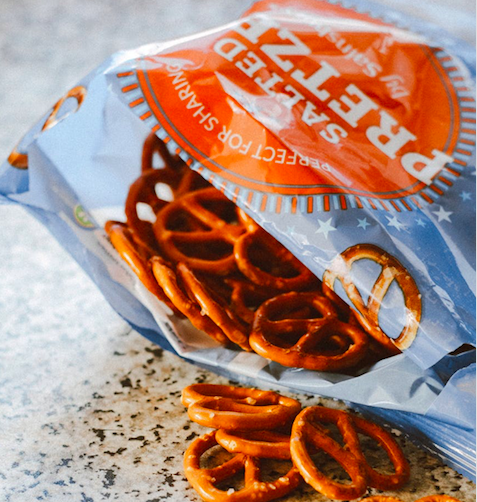Share this
CHECKLIST: FDA-Compliant Packaging Materials
by Luminite on Nov 23, 2020 12:30:00 PM

When it comes to packaging food or medical devices, it’s crucial that everything that needs to be compliant is compliant.
Printing inks and plastics used for labels and packaging can fall under a variety of regulations. If you are printing such labels and packaging, it’s beneficial for both you and your clients that you ensure that your products meet FDA regulations.
This post provides a checklist for FDA-compliant packaging materials, so keep reading!
FDA-Compliant vs FDA-Approved Packaging Materials
The term “FDA-Approved” is thrown around a lot. However, the FDA only goes through the effort of approving certain categories of products – like medical devices, pharmaceutical drugs, and food. The FDA does not “approve” packaging materials.
Instead of focusing on FDA approval, instead look for FDA-compliant packaging materials. Some regulations apply to certain materials found under the Federal Food, Drug, and Cosmetic Act that you must adhere to in specific situations – like if the material is going to come into contact with a food product.
Some of these materials include:
- Printing inks
- Food grade plastics
- Medical plastic
FDA-Compliant Printing Ink
Printing inks used for food products are often under a critical eye because improper inks can cause food safety issues and contamination. There are three problems with non-FDA-compliant inks to watch out for:
- Migration – When some or all of the ink components move through the substrate
- Gas-phase transfer – When volatile ink substances interact with the air in the packaging
- Invisible set-off – When components of the ink move from the printed side to the food-facing side of the packaging
With FDA-compliant printing inks, these issues won’t occur. Using compliant inks won’t only help your product packaging stand out, it’ll also make sure it’s safe for consumers.
FDA-Compliant Plastics | Food-Grade Plastics
According to the Food, Drug, and Cosmetic Act, food-grade plastic is a substance that is intended to be used in food:
- Manufacturing
- Storage
- Packing
- Transportation
- Packaging
These food-grade plastics have to perform their job without creating issues like leaching. The goal is to prevent the packaging from affecting the taste of the food or affecting its safety.
There are numerous FDA food-grade plastics available for packaging, including:
- Low-Density Polyethylene (LDPE) – Code 4 – Can be formulated to be tough and impact-resistant or thin enough for heat sealing
- Polyethylene Terephthalate (PET or PETE) – Code 1 – Good impact resistance
- High-Density Polyethylene (HDPE) – Code 2 – Strong and lightweight, also has a strong resistance to mold and rot
- Polypropylene (PP) – Code 5 – Has a high melting point, making it useful for microwaveable food and dishwasher safe applications
FDA-Compliant Plastics | Medical Device Plastic
Medical device plastics are unique formulations that make them compliant with FDA regulations. They can often be sterilized with gamma rays, chemically with ethylene oxide, and several other popular sterilization methods. Plus, other plastics are created to be antibacterial.
There is a long list of plastics approved for medical devices and medical device packaging. These include formulations of Nylon, Rulon 641, Polycarbonate, PEEK, and many more.
Having the right kind of plastic is also a consideration for pharmaceutical packaging, for blister packs especially.
FDA-Compliance for Optimal Packaging Printing
If you’re producing packaging material for the food industry or for medical devices, it’s important to know what’s FDA-compliant and what’s not.
To learn more about flexo printing inks, feel free to download our guide to ink transfer!
Share this
- Flexographic Printing (81)
- Image Carrier (28)
- Elastomer sleeves (27)
- Ink Transfer (25)
- Quality (22)
- Flexo sleeve (20)
- News (18)
- printing defects (18)
- flexo printing defects (17)
- sustainability (13)
- Flexo Troubleshooting (12)
- Ink (12)
- Digital Printing (10)
- Flexo 101 (10)
- Flexo Inks, (9)
- Anilox (7)
- Blister Packaging (7)
- Cost (6)
- print misregistration (6)
- regulations (6)
- Corrugated Printing (4)
- pinholing (4)
- "Tradeshow (3)
- Digital Flexo (3)
- Gravure Printing (3)
- Insider (3)
- Load-N-Lok (3)
- Wide Web (3)
- direct laser engraving (3)
- flexo-equipment-accessories (3)
- gear marks (3)
- halo (3)
- testing (3)
- Narrow Web (2)
- bridging (2)
- feathering (2)
- filling in (2)
- mottled image (2)
- pressure (2)
- Labelexpo (1)
- dirty prints (1)
- doughnuts (1)
- embossing (1)
- kiss impression (1)
- October 2023 (2)
- September 2023 (1)
- August 2023 (1)
- July 2023 (3)
- June 2023 (1)
- May 2023 (5)
- April 2023 (1)
- March 2023 (2)
- February 2023 (1)
- January 2023 (3)
- December 2022 (1)
- October 2022 (3)
- September 2022 (2)
- August 2022 (2)
- July 2022 (3)
- May 2022 (1)
- April 2022 (4)
- March 2022 (2)
- February 2022 (5)
- January 2022 (7)
- December 2021 (1)
- November 2021 (3)
- October 2021 (2)
- September 2021 (1)
- August 2021 (1)
- July 2021 (3)
- June 2021 (1)
- May 2021 (4)
- April 2021 (4)
- March 2021 (4)
- February 2021 (2)
- December 2020 (1)
- November 2020 (1)
- October 2020 (2)
- September 2020 (1)
- August 2020 (3)
- July 2020 (2)
- June 2020 (3)
- May 2020 (1)
- April 2020 (1)
- November 2019 (3)
- October 2019 (1)
- August 2019 (1)
- July 2019 (1)
- April 2019 (1)
- March 2019 (1)
- January 2019 (1)
- October 2018 (2)
- August 2018 (1)
- July 2018 (1)
- June 2018 (1)
- February 2018 (2)
- October 2017 (1)
- September 2017 (2)
- January 2016 (1)
- February 2015 (1)
- January 2015 (1)
- December 2014 (2)
- September 2014 (1)
- February 2014 (1)
- January 2014 (1)
- December 2013 (3)
- October 2013 (1)
- September 2013 (1)
- June 2013 (1)
- January 2013 (1)


Comments (3)